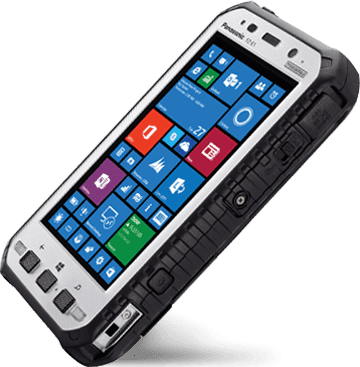Panasonic
Toughpad FZ-B2: A comparative Study
From time to
time, it is not easy to be first, and Panasonic determined that out with their
unique Android-based Toughpads. Admirable products, great introduction at the
Dallas Cowboys stadium November 2011, but, at least as far as the smaller
Toughpad b1 went, just not quite right. That's all fixed now. On October 29th,
Panasonic introduced the second generation of its 7-inch Toughpad, the Panasonic-Toughpad FZ-B2 in UAE.
Open
Multimedia Applications Platform (OMAP):
OMAP tools
usually include a general-purpose ARM architecture processor core plus one or
more specialized co-processors. Gone is the OMAP chip (piece), gone is the thin
and rather low resistance screen, and gone is the phone-like
portrait-orientation. There was not anything inherently wrong with the initial
B1; it's just that Panasonic's customers wanted something a bit more
conventional, even in an Android tablet.
Portrait
and Landscape Mode:
The
condition is pretty clear: whereas the original B1 was considered as a
"phablet" to be used in portrait mode similar to a phone, the new B2
looks more like a Windows tablet devised for use in the Windows-typical
landscape adjustment. The tags are in landscape mode, and so are the commands.
So it seems like even with Android, Panasonic customers prefer to work in
landscape mode, just like one does on a desktop or notebook.
Display:
The phase
ratio of the display also moved from the very narrow 16:9 to a more traditional
16:10. And moving from 1024 x 600 resolution, which is what old netbooks had,
to a more satisfying 1280 x 800 pixel means not only 2/3 more pixels but also
moving up from marginal resolution to something that remains contemporary even
in this day and age of "retina" screens.
Processor:
On the
processor view, the step up from the dual-core OMAP-4460 to a quad-core N2930
is enormous. Not that the OMAP chip was required, but the N2930, which is an
important part of Intel's "Bay Trail" lineup with 22nm process
technology and possesses a lot of Core processor technology annealed in, is in
a completely different class.
At this
point, some users may go, "Hmmm... that sounds a terrible lot like a
slightly lower-end version of the Windows-based Toughpad M1." And, at
least estimating by the specs, that's indeed the way it seems. The M1 holds a
full Core processor, more memory, more RAM, and the Microsoft-mandated 10-point
multi-touch instead of "just" 5-point, but in most other aspects, it
seems virtually the same. Same dimensions, same weight, same looks. One big
difference is the starting price for the Android-based FZ-B2 is US$1,299, and
the Windows-based FZ-M1 is US$2,099.
Touch
Sensitivity:
One thing we
don't understand is if the Panasonic TOUGHBOOK FZ-B2 also comes with the same
next-gen capacitive touch controller that allows the FZ-M1 to be operated with
gloves, in moisture, and also with a marvelously precise narrow-tip yielding
capacitive pen. If so, the B2 would a lesser-priced Android version of the
Windows-based Toughpad M1 that we contemplate a milestone product. But even if
it doesn't possess that pen (unlike Windows, Android doesn't need a precise
pen), the Panasonic Toughpad FZ-B2 appears to be a very, very strong contender
among 7-inch class rugged Android tablets.

Comments
Post a Comment